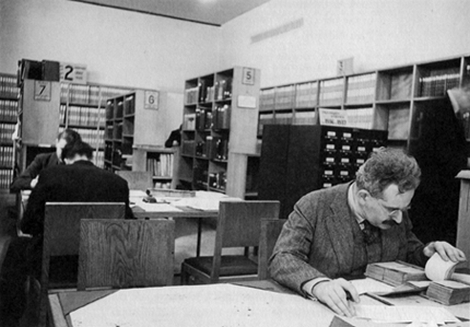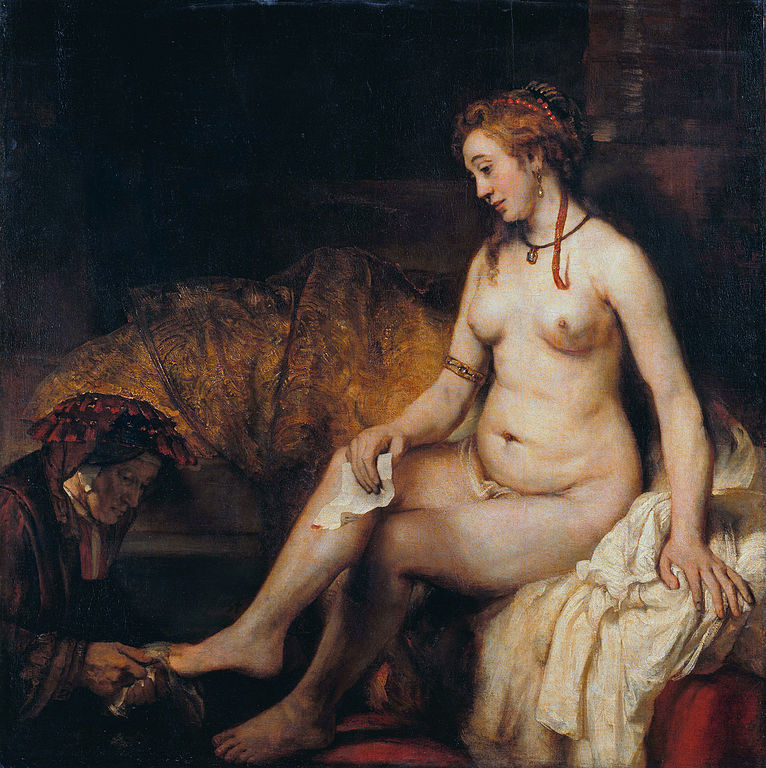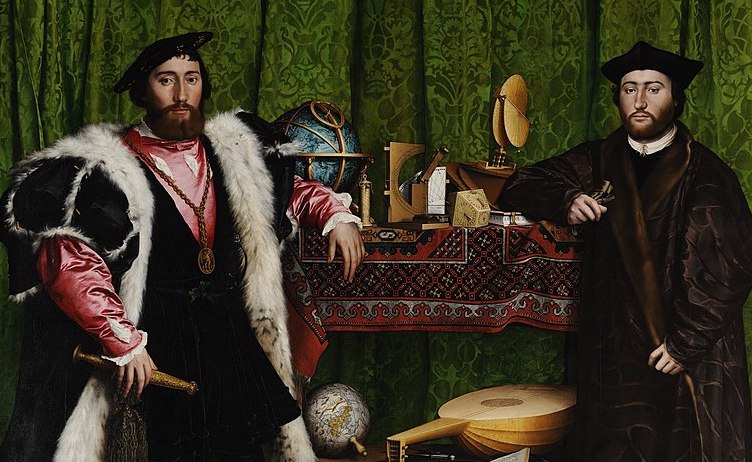How John Berger’s “Ways of Seeing” changed the way we look at art

- John Berger’s television show Ways of Seeing is a hugely important work of critical theory.
- Over the course of just four episodes, Berger implores us to look at centuries-old masterpieces from an entirely different perspective.
- His show looks at these paintings not as the result of divine inspirations, but products of the time and place in which they were created.
In the opening scene of his television show Ways of Seeing, John Berger — a British critic, painter, and author — uses a boxcutter to methodically slice and dice his way through the canvas containing Sandro Botticelli’s Venus and Mars. “Tonight,” he says as he attempts to isolate the figure of Venus from the rest of the image, “it isn’t so much about the paintings themselves I want to consider, as the way we now see them. Now, in the second half of the 20th century, because we see these paintings as nobody saw them before.”
Ways of Seeing, which premiered on the BBC in 1972, was edited in a rapid and ephemeral style reminiscent of Orson Welles’ video essay about Hungarian art forger Elmyr de Hory: F for Fake. Over the course of four half-hour episodes, Berger lays out his own iconoclastic interpretation of a specific tradition in European painting — a tradition which, he claims, was born during the height of the Italian Renaissance, and died when the advent of the camera began to push painters from naturalism towards abstraction.
Assembled in his parents’ living room, Berger’s stimulating program was met with rave reviews upon release. Writing for The New Republic on the occasion of Berger’s death in 2017, Jo Livingstone said that, to its biggest fans, Ways of Seeing represented the first time that a critic “trusted them to see past the appearance of things (…) Berger takes [viewers] beyond the visible, towards a closer understanding of the world as it really is — the one capitalism, patriarchy, and empire try to hide from you.”
If the show’s initial reception was better than expected, it paled in comparison to the cult following Berger attained over time. As of November 2021, the first episode of Ways of Seeing has racked up nearly 2 million views on YouTube. The show as a whole has since become required viewing for media studies and critical theory courses across the world. It is also considered a pioneering work in the study of visual culture, with Berger’s ideas going on to serve as the conceptual bedrock of that young but increasingly important academic discipline.
From appreciation to critique
Professors assign Ways of Seeing because it is more entertaining and digestible than the writings of Béla Balázs or Siegfried Kracauer, though its contents are no less complex. While Berger aspired to become a philosopher of the common man, he leans into a body of critical theory which — to the uninitiated — may seem redundant or abstruse. At the same time, the show never attempts to put forth any argument of its own. Instead, Berger gives us the tools we need to question what we thought we knew about art, each other and the world around us.
In terms of approach, Ways of Seeing was a response to another, very different art show produced by the BBC at the time: Civilization. Written and narrated by the art historian Sir Kenneth Clark, this program looked at the masterpieces of European painting from a much more traditional perspective — one which sees art not as a record of its time and place, but an extension of a higher truth that had been revealed to the artist through a combination of divine inspiration, innate talent, and acquired wisdom.
Berger went a different route, one which art historians follow to this day. Ways of Seeing, as Joshua Sterling explained in an essay written for Aeon magazine, shifted the study of art away from passive appreciation toward active criticism. In Berger’s eyes, art was no longer the direct manifestation of beauty or truth, but a flawed representation of these concepts. The appearance of a painting was not governed by the Platonic form that artists attempted to emulate, but the social and political climate of the times they lived in, not to mention their religion, race, gender, and class.
Although Ways of Seeing includes many revelations, the show is perhaps best known for introducing the now widely known concept of the male gaze. Taking a closer look at female nudes, Berger argues that only a handful of pictures in the western canon — 20 or 30 — depict their subjects as themselves. In all other cases, their physical appearance and place within the composition are altered in ways that transform them from human beings into the objects of desire. To paraphrase Berger, these paintings were not only made to be looked at, but owned.
The world through the eyes of John Berger
Livingstone said parts of Ways of Seeing “are essentially explainers for other, more complicated works.” This is quite true, as the success of the show not only garnered interest in Berger’s other creative projects, but also in the academic sources that originally inspired him. Among these was an essay penned by the German philosopher Walter Benjamin titled Art in the Age of Mechanical Reproduction. Benjamin’s goal was the same as Berger’s: to show how the modern age changed the way we look at centuries-old artwork.
In his own essay, Benjamin also digs below the surface of a canvas to describe qualities which the naked eye cannot perceive. He is specifically concerned with the concept of aura: the gravitational pull a work of art can exert over its onlookers. Because the powerful feeling that washes over us when we come face to face with masterpieces inside museums is curiously absent when we encounter a perfect reproduction of the same work elsewhere, Benjamin concludes that aura cannot be vested in the visual qualities of the work itself.

Instead, the aura of a work is vested in its authenticity. That is to say, the version of Rembrandt’s Night Watch in the Rijksmuseum strikes us as more impressive than a version found on Google, not because it has a different appearance — thanks to digital technologies, the two are actually identical — but rather because it is the original. “Even the most perfect reproduction,” writes Benjamin, “is lacking in one element: its presence in time and space, its unique existence at the place where it happens to be.”
Working almost 30 years after the publication of Art in the Age of Mechanical Reproduction, Berger investigates how the processes which Benjamin originally described have developed over time. Thanks to modern media, paintings are no longer silent and still. Once recorded, their footage can be transferred all across the world through broadcast and internet. Such transmissibility comes with both advantages and disadvantages. On the one hand, art is no longer coveted by a group of elites but is accessible to almost everyone.
An unending project
On the other, important elements of an artwork may be lost when that artwork is translated from one medium into another. This not only includes their aura, but also their significance. “Because paintings are silent and still,” Berger explains, “they can be used to make arguments which may be different from their original meaning (…) The camera moves in to remove a detail of a painting from the whole. Its meaning changed. An allegorical figure becomes a pretty girl anywhere. From being part of a strange, poetical world of metamorphosis, a dog can be turned into a pet.”
The enduring relevance of Ways of Seeing is proof enough that Berger had been on to something. Created during a time when the internet did not yet exist, the show accurately predicted how our visual culture would evolve in tandem with the technologies used to transmit those visuals. Berger provided several budding social movements with terminology; as feminist writers adopted his definition of the male gaze, others were inspired to question how certain races were (or were not) traditionally depicted by white, Western painters.

Needless to say, a big part of the show’s success has to be traced back to the personality of its creator. Berger was a special kind of academic, in that he was both widely influential and managed to leave behind a largely divisive legacy. When he finally passed away at 90 years old, journalists mourned the loss of a gentle yet thoroughly rebellious intellectual, one whose continuous refusal to become entangled by academic institutions ultimately allowed him to make produce a ceiling-shattering work of philosophical inquiry.
Berger’s greatest strength — his desire for simplicity in both thought and one’s expression of it — could sometimes be his greatest weakness. But unlike other theorists, his inclination toward introspection generally kept him on the right path, and he never failed to contextualize his own thinking within larger frameworks. “Our survey of European oil painting,” he wrote in the book adaptation of Ways of Seeing, “has been very brief and therefore very crude. It really amounts to no more than a project for study — to be undertaken perhaps by others.”





